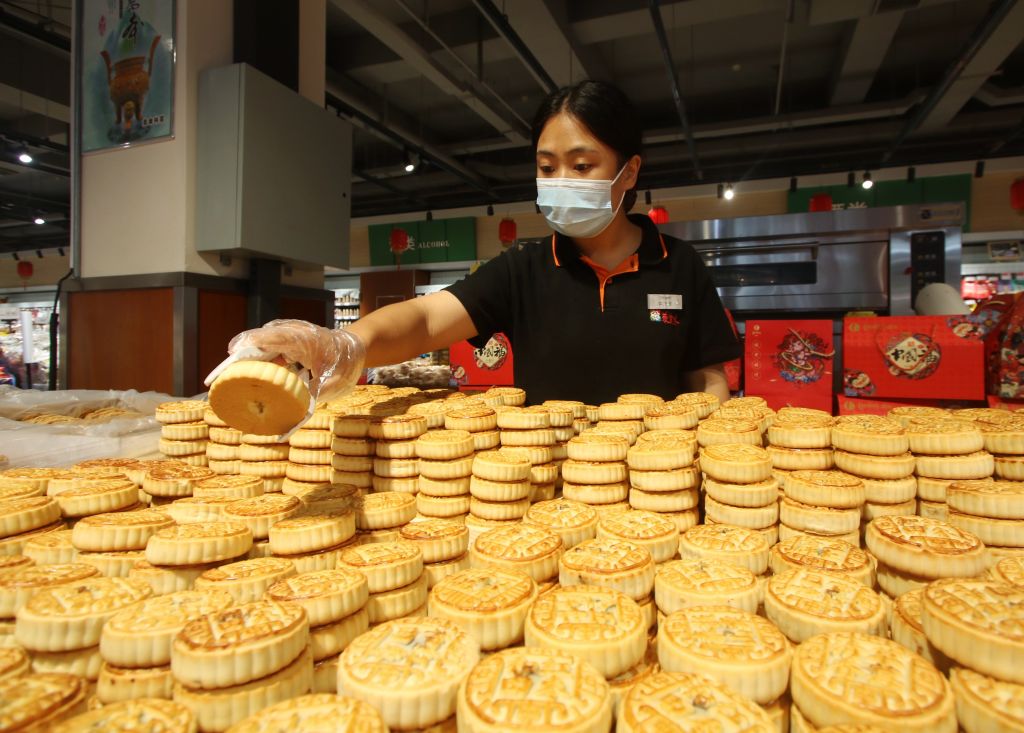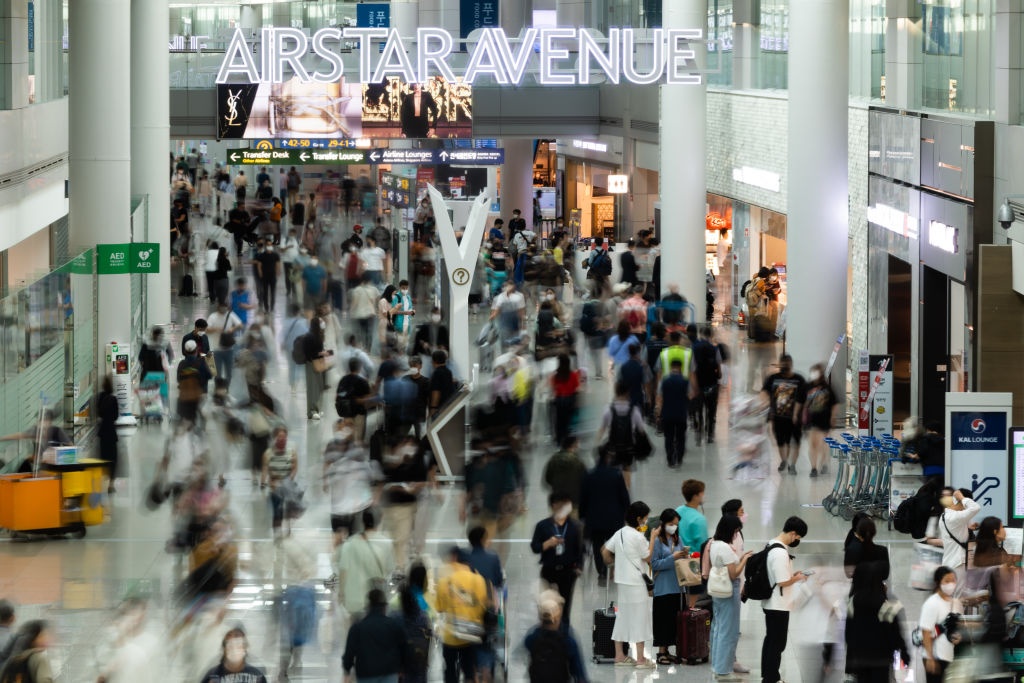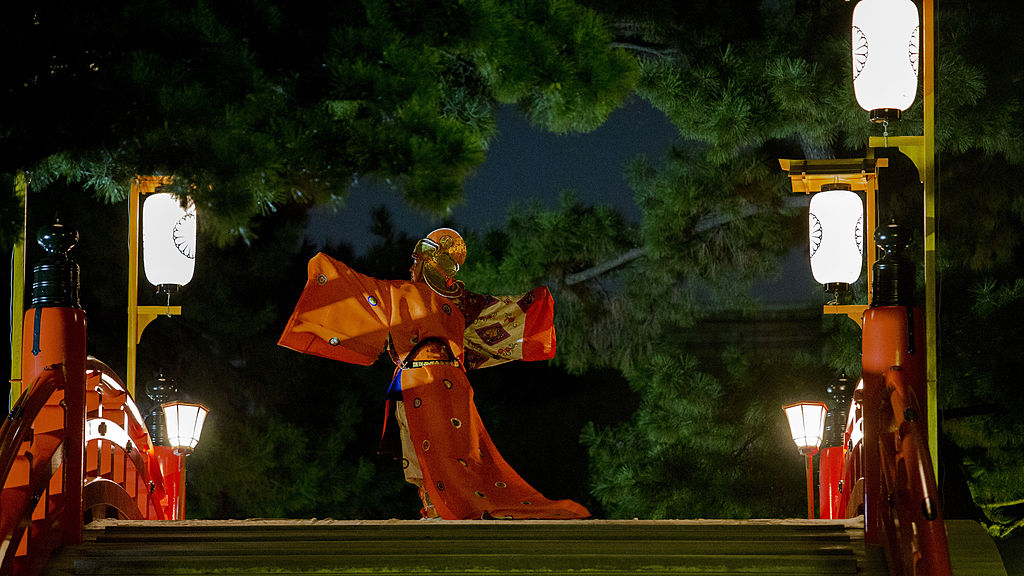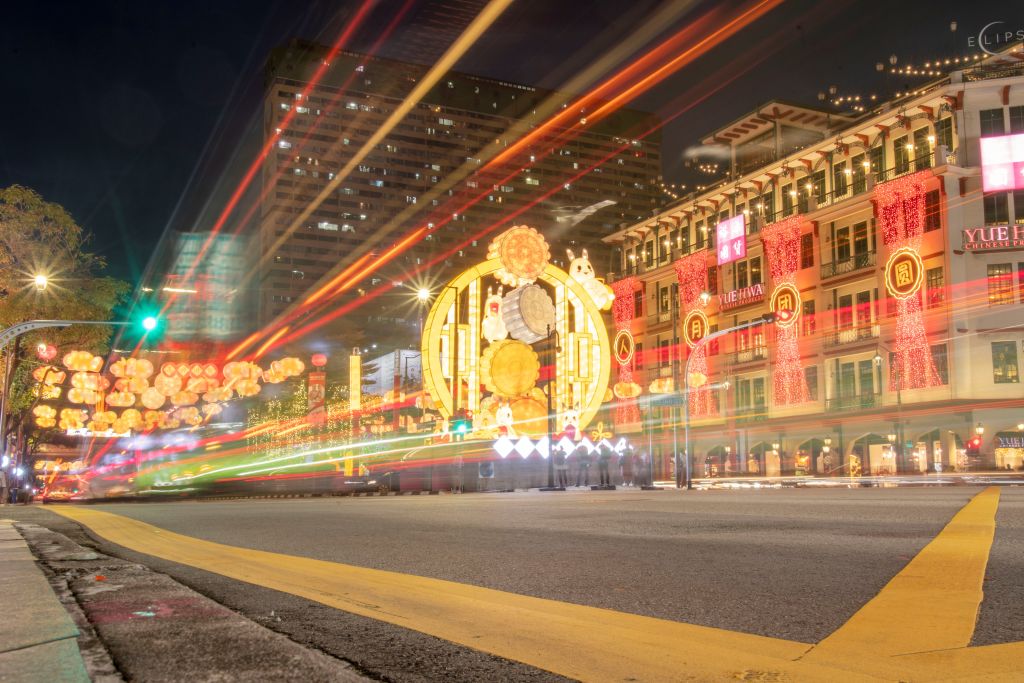美国时代周刊:风靡东亚的中秋节
2022-09-10 17:48
作者:外教中国

BY CHAD DE GUZMAN / HONG KONG
The Mid-Autumn Festival is observed by millions of people across East Asia on the 15th day of the eighth month of the lunar calendar. This means the festival date changes every year in the Gregorian calendar, but it is always around the time of the harvest moon. This year, the Mid-Autumn Festival falls on Sept. 10.
每年农历八月十五日是东亚数百万人的中秋节。这意味着在公历中,节日日期每年都会变化,但总是在收获月前后。今年的中秋节是9月10日。
Certain activities, like moon gazing and displaying lanterns, are popular across several Asian countries—as is the symbol of a rabbit on the moon. But there are plenty of local traditions too.
某些活动,如赏月和展示灯笼,在几个亚洲国家很受欢迎,因为这是月亮上兔子的象征。但也有很多当地传统。


Illuminated lanterns are seen at Lee Tung Street ahead of the upcoming Mid-Autumn Festival on September 6, 2022 in Hong Kong, China. Li Zhihua/China News Service via Getty Images

The legend of Chang’e and her ascent to the moon has long been associated with the Mid-Autumn festivities in China.
嫦娥奔月的传说一直与中国的中秋节有关。
The mythology says that in ancient times the Earth had 10 suns, which scorched the world. A celebrated archer named Hou Yi drew his bow and shot nine of the suns down, saving humanity. For his heroic act, the gods gave him the pill of immortality, which he handed to his wife Chang’e for safekeeping. However, one of his followers, Peng Meng, tried to steal the pill while Hou Yi was out hunting—so Chang’e swallowed it to prevent it from falling into Peng Meng’s hands. She became immortal and floated up to the moon, where she has lived since. Apart from Chang’e, the moon also has another resident: the Jade Rabbit.
神话说,在古代,地球有10个太阳,它们烧焦了世界。一位名叫后羿的著名弓箭手拉弓射落了九个太阳,拯救了人类。由于他的英雄行为,众神给了他不朽的药丸,他将其交给妻子嫦娥保管。然而,当后羿外出打猎时,他的一个追随者彭蒙试图偷这颗药丸,所以嫦娥吞下了它,以防止它落入彭蒙手中。她成了不朽的人,并漂浮到月球上,从此她就住在那里。除了嫦娥,月亮还有另一个居民:玉兔。
In Chinese tradition, the full moon symbolizes family reunion, thus Mid-Autumn is a festival to be celebrated at home. People admire the moon and eat moon cakes, which come stuffed with a variety of fillings, from the traditional salted egg yolk and lotus paste to contemporary versions with ice-cream, fruit, and custard fillings.
在中国传统中,满月象征着家庭团聚,因此中秋节是在家里庆祝的节日。人们欣赏月亮,吃月饼,月饼里有各种各样的馅料,从传统的咸蛋黄和荷花酱到现代的冰淇淋、水果和蛋挞馅料。中秋节以月之圆兆人之团圆,为寄托思念故乡,思念亲人之情,祈盼丰收、幸福,成为丰富多彩、弥足珍贵的文化遗产。

A staff member arranges moon cakes at a supermarket as the Mid-Autumn Festival approaches, Sept. 5, 2022, Handan, Hebei province, China. VCG/VCG via Getty Images
Other foods eaten during the festival include taro (because its name in many Chinese dialects is a homonym for “good fortune comes”) and hairy crab, a seasonal delicacy.
节日期间吃的其他食物包括芋头(因为在许多中国方言中,芋头的名字是“好运来了”的谐音)和大闸蟹,一种季节性美食。
Lanterns play an important role in the festivities. These days, the candle-lit paper lanterns of yore are rarely seen. Most children carry around the battery-powered variety. Single-use glow sticks are also common—leading to appeals from environmentalists for curbs on their use.
灯笼在庆祝活动中起着重要作用。如今,人们很少看到昔日的烛光纸灯笼。大多数儿童随身携带电池供电的产品。一次性发光棒也很常见,这导致环保人士呼吁限制其使用。
Some regions have specific Moon Festival customs. In eastern China’s Zhejiang province, the Qiantang River’s tidal bore attracts many visitors. In Hunan province, women from the Dong ethnic group customarily steal vegetables—because according to legend the moon goddess will shower “sweet dew” on them and whoever consumes them will be healthy and happy.
一些地区有特定的中秋节习俗。在中国东部的浙江省,钱塘江涌潮吸引了许多游客。在湖南省,侗族妇女通常会偷蔬菜,因为根据传说,月亮女神会在蔬菜上洒“甘露”,谁吃了都会健康快乐。

South Koreans celebrate Chuseok, also known as hangawi, at this time. It’s one of the country’s biggest and most important holidays, alongside Seollal, or lunar new year.
在这个时候,韩国人庆祝朱塞克,也被称为hangawi。这是该国最大和最重要的节日之一,与农历新年一起。
Many go back to their hometowns to celebrate with big family reunions and hold memorial services, called charye, for their ancestors. The day before and after are also public holidays in South Korea, which allows people time to travel home. This year, Chuseok is being observed from Sept. 9 to 12.
许多人回到自己的家乡,与大家庭团聚庆祝,并为他们的祖先举行被称为“查耶”的追悼会。前一天和后一天也是韩国的公共假期,这让人们有时间回家旅行。今年9月9日至12日,人们观察到了Chuseok。

South Koreans traveling for the Chuseok holiday are seen at Incheon International Airport in Incheon, South Korea, on Sept. 8, 2022. SeongJoon Cho/Bloomberg via Getty Images
At festive gatherings, Koreans eat songpyeon, a half-moon-shaped rice cake filled with a semi-sweet stuffing, as well as seasonal fruits and vegetables such as persimmons and chestnuts. They also enjoy a host of entertainment, including the ganggangsullae, a traditional circle dance. And of course, come nighttime, people head out to admire the full moon where they look out for the moon rabbit, or daltokki. The creature is said to be visible on the lunar surface, busy making rice cakes.
在节日聚会上,韩国人会吃宋平(songpyeon),这是一种半月形的米糕,馅半甜,还有柿子和栗子等时令水果和蔬菜。他们还享受各种娱乐活动,包括传统的圆圈舞“冈冈苏拉”。当然,到了晚上,人们会去观赏满月,在那里他们会寻找月亮兔,或Daltoki。据说这种生物在月球表面可见,忙着做年糕。

The Japanese celebrate Tsukimi, which translates to “looking at the moon.” Like the Koreans, they try to spot the moon rabbit, called tsuki no usagi in Japanese, as the animal goes about its festive task of making the rice cakes known as mochi.
日本人庆祝月兔节,意思是“看月亮”。和韩国人一样,他们试图发现月兔,在日文中称为“月兔”,因为这种动物正在进行制作米糕的节日任务。
The festivities are said to date back to Japan’s Nara period (710-794). In the following Heian era (794-1185), Tsukimi was popular among aristocrats. Moon viewing parties, frequently held on boats, included drinking, listening to music and composing poetry. By the Edo period (1603-1868) the tradition was being widely enjoyed by the public.
据说,庆祝活动可以追溯到日本奈良时期(710-794年)。在随后的平安时代(794-1185年),筑木在贵族中很受欢迎。赏月派对经常在船上举行,包括喝酒、听音乐和作诗。到江户时代(1603-1868年),这一传统被公众广泛接受。

Traditionally, tsukimi is marked by adorning the home with pampas grass, to represent a bountiful harvest. Festive snacks include tsukimi-dango, a round rice dumpling symbolizing health and happiness, and seasonal produce like chestnuts and pumpkin. Eggs are also consumed, as their oval whiteness is felt to be suggestive of the full moon. Even fast food brands get in on the act, adding eggs to burgers.
传统上,tsukimi的标志是用潘帕斯草原装饰家,以代表丰收。节日小吃包括象征健康和幸福的圆形粽子tsukimi dango,以及栗子和南瓜等季节性产品。鸡蛋也被食用,因为它们的椭圆形白色被认为是满月的象征。甚至快餐品牌也加入进来,在汉堡中添加鸡蛋。

The Mid-Autumn Festival in Vietnam is called Tet Trung Thu and is also known as Tet Thieu Nhi, or Children’s Festival.
越南的中秋节被称为Tet Trung Thu,也被称为儿童节。
One popular tale linked to the festival is that of a woodsman named Chu Cuoi, who floated away with a magical banyan tree to the moon. It is said one can see Cuoi under the tree on the face of the full moon. During the festival, children holding lanterns—said to help guide Cuoi on his return to earth—spill into the streets and watch lion dances.
与这个节日有关的一个流行故事是一个名叫楚科伊的樵夫,他带着一棵神奇的榕树飘到了月亮上。据说在满月的时候可以看到树下的科伊。节日期间,孩子们举着灯笼,据说是为了帮助指引科伊返回地球,他们纷纷走上街头观看舞狮。
 Visitors pose for photos with the costumed Monkey King from Chinese mythology on Sept. 26, 2020 in Hanoi, Vietnam. The Mid-Autumn Festival is an occasion for a children's night out and family gathering Linh Pham/Getty Images
Visitors pose for photos with the costumed Monkey King from Chinese mythology on Sept. 26, 2020 in Hanoi, Vietnam. The Mid-Autumn Festival is an occasion for a children's night out and family gathering Linh Pham/Getty ImagesFamilies mark Tet Trung Thu by placing cakes and fruit trays, symbolizing filial piety, before ancestral altars in their homes. Moon cakes are also a staple in Vietnam, and come in two types: banh nuong (oven-baked) and banh deo (soft-crusted).
家庭在家中祖先祭坛前放置蛋糕和水果盘,象征孝顺,以此来纪念春节。月饼也是越南的主食,有两种类型:班农(烤箱烘焙)和班德(软皮)。

Some three-quarters of Singaporeans are of Chinese descent, so many of the Mid-Autumn Festival customs and traditions from China are also observed in Singapore.
In the past, celebrations centered on Chinatown, with goldfish- and star-shaped lanterns hanging from shops in Temple Street and Smith Street. Traditional bakeries offered moon cakes.
大约四分之三的新加坡人是华裔,因此许多来自中国的中秋节习俗和传统在新加坡也有。过去,庆祝活动以唐人街为中心,庙街和史密斯街的商店悬挂着金鱼和星形灯笼。传统的面包店提供月饼。
 This Sept. 7, 2022 photo shows Mid-Autumn Festival decorations installed at Singapore's Chinatown. Then Chih Wey/Xinhua via Getty Images
This Sept. 7, 2022 photo shows Mid-Autumn Festival decorations installed at Singapore's Chinatown. Then Chih Wey/Xinhua via Getty ImagesThese days, Singaporeans celebrate the Mid-Autumn Festival with extravagant lantern displays held across the city-state in venues such as Gardens by the Bay. The Chinatown celebrations are also on a grander scale. The area transforms into a busy bazaar, with pop-up stalls selling decorative ornaments and festive snacks. There are also lantern-painting competitions and live performances.
如今,新加坡人庆祝中秋节,在整个城市国家的海湾花园等场所举行盛大的灯展。唐人街的庆祝活动规模也更大。该地区变成了一个繁忙的集市,有出售装饰饰品和节日小吃的弹出式摊位。还有彩灯绘画比赛和现场表演。
Moon gazing is still a big part of the festival, with the beach being a popular location for the activity.
赏月仍然是节日的一大组成部分,海滩是活动的热门地点。
文章来源:美国《时代周刊》
翻译:外教平台(微信ID:teslcn)


